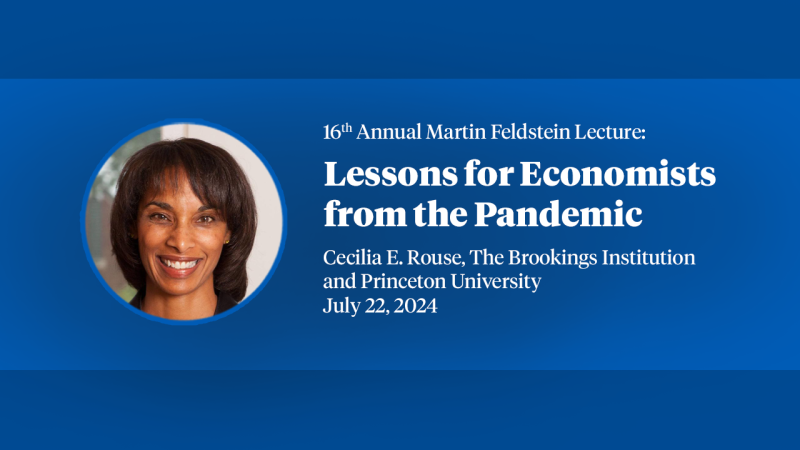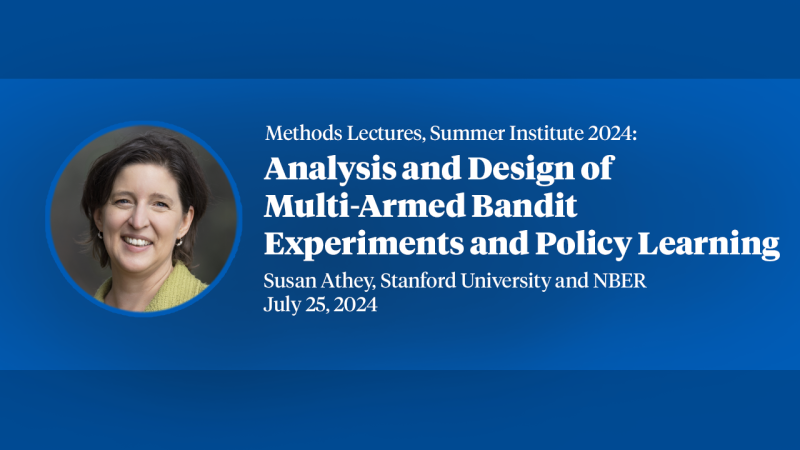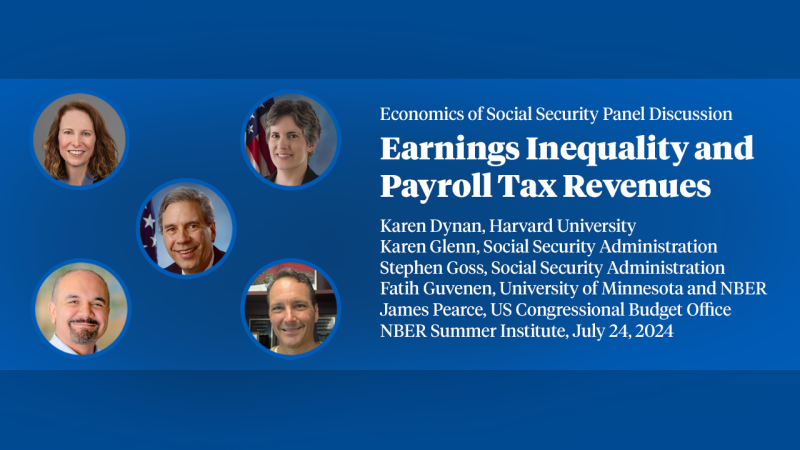The Microeconomic Evidence on Contagion, Capital Controls, and Capital Flows
On December 19, 2006, Thailand implemented restrictive capital controls on foreign investment and the Thai stock index fell by over 15 percent before trading was halted. Investors quickly began to draw comparisons to the summer of 1997, asking if events in Thailand would spark contagion and be the first in a series of crises around the globe. My research over the past few years has attempted to provide the framework and analysis to understand these types of events--covering topics from financial contagion and global linkages to capital controls and capital flows.
Many researchers -- including other NBER affiliates -- have made important contributions to these topics. Much of my own research has tried to take a different approach by using firm-level data to understand the macroeconomic movements in exchange rates, stock indices, investment, and growth. This "microeconomic approach" to answering questions in international finance has the benefit of using the wealth of information incorporated in firm behavior -- information that is lost in the aggregation process used to create macroeconomic statistics. Heterogeneity across firms can be an important tool in identifying the impact of various macroeconomic events. This strategy of using disaggregated and firm-level data in international economics recently has become popular in the international trade literature(1) as well as in international finance.(2)
Contagion, Currency Crises, and the Cross-Country Transmission of Shocks
A series of financial crises -- from Mexico to Asia to Russia to Argentina -- motivated an academic literature on "contagion" and the international transmission of crises.(3) The term contagion is generally used to refer to the spread of negative shocks -- although the definition has evolved over time.(4) The last decade has clearly shown that crises that originate in relatively small economies (such as Thailand) can quickly affect markets of very different sizes and structures located around the world, including markets that appear unrelated to the country where the crisis originated.
Early analyses of contagion tested for increased comovement between countries after a crisis (in variables such as their stock returns, bond spreads, exchange rates, or capital inflows). One complication with this approach, however, is that the correlation coefficients underlying this analysis depend on market volatility and can be biased. My work with Roberto Rigobon shows how this bias can significantly affect estimates of contagion.(5) We develop a correction for this bias and show that most recent crises were transmitted to other countries through linkages that exist in all states of the world -- and not through special transmission channels that only occur during crises. Other authors have since used different identifying assumptions in order to adjust for this bias in tests for contagion.(6)
This approach of testing how crises affect cross-country comovements, however, has a major shortcoming: it cannot explain why these macroeconomic variables commove or exactly how shocks are transmitted internationally. For investors interested in how a crisis spreads, and especially for governments and policymakers that would like to contain and prevent crises, understanding exactly how shocks spread is of critical importance. Do crises spread mainly through "real" linkages, such as trade and banking flows? Or, do they spread through investor behavior, driven by portfolio balancing or informational asymmetries or herding or irrationality? Sorting out these various explanations is further complicated by the fact that many cross-country linkages are highly correlated, so it is difficult to identify these various mechanisms in empirical work.
In order to differentiate between these various mechanisms, my research moved from the macroeconomic to the microeconomic level. Within each country there is a large variation in how different companies are affected by shocks. By using this firm heterogeneity it is possible to identify the mechanisms by which crises spread. To put this approach into practice, I created a dataset with financial statistics, product information, geographic data, and stock returns for over 10,000 companies in 46 countries.(7) My results suggest that direct trade flows and trade competition in third markets were important determinants of country vulnerability to crises.(8) I also find some evidence of a "portfolio recomposition" effect, in which investors were forced to sell assets in liquid markets in response to a crisis elsewhere. Finally, I find little evidence of a generalized "credit crunch" driving contagion.
Most of the empirical research on the transmission of crises -- whether at the macroeconomic or microeconomic level -- has focused on how crises affect financial variables (such as their impact on stock prices). This approach is not only timely, since the financial information is immediately available, but also has the benefit that stock returns should incorporate all known information about the future impact of the crisis. However, stock returns may be influenced by factors other than expected future profits, especially in the less developed financial markets common in emerging markets. Moreover, even if stock returns accurately capture expected future profitability, the actual impact of a crisis could significantly diverge from the expected impact. Therefore, in my next set of papers I shifted from focusing on the financial market impact of crises to their broader impact on other firm-level variables, such as sales, profits, and investment.
In one of these papers, I develop a simple model to clarify exactly how exchange rate movements affect firms' profitability, focusing on the impact on the relative costs of labor and capital for firms that produce undifferentiated products.(9) The empirical analysis shows that in the longer term, which firms gain and lose from devaluations is determined by the relative intensity of capital and labor in production, as well as by how the devaluations affect interest rates. In a closely related paper, I expand the analysis to include firms that produce differentiated as well as undifferentiated products.(10) The results show that firms with greater foreign sales exposure have significantly better performance (according to a range of indicators) after depreciations, and firms with higher debt ratios tend to have lower net income growth. The results in these papers can help to explain why devaluations boost economic growth in some cases, but cause e conomic contractions in others.
In a final series of papers on the cross-country transmission of shocks, I broaden my focus to non-crisis as well as crisis periods.(11) Work with Menzie Chinn tests whether cross-country linkages through direct trade, trade competition in third markets, bank lending, or FDI can explain why movements in the world's largest financial markets often have such large, yet diverse, effects on other financial markets and how these cross-market linkages have changed over time.(12) The paper uses a factor model and shows that movements in the U.S. market, as well as sectoral factors, were important determinants of market returns in the later half of the 1990s. Other work with Tilak Abeysinghe looks at how spillover effects across markets are amplified by having "multiplier effects" on other countries, which in turn have their own spillover effects.(13) To track these multiplier effects, we develop a structural VAR model using a new specification strategy linking output growth for all countries in the world. Estimates and impulse-response matrices show that these multiplier effects can transmit shocks in very different patterns than predicted by standard bilateral-linkage models.
Capital Controls
Governments and policymakers have struggled continually with how to protect their economies from contagion and the negative effects of global linkages. One prescription for emerging markets and developing countries that has recently gained support is capital controls -- and especially controls on capital inflows. Several emerging markets -- from Colombia to Russia to Thailand -- recently have implemented new controls on capital inflows. Although capital controls may yield benefits in certain situations, my research suggests that capital controls come at a substantial cost and are not the panacea that many believe.
The most cited "success" story of capital controls is the market-based tax on capital inflows enacted by Chile from 1991-8 (the encaje). Several papers have analyzed the macroeconomic impact of the encaje. The general conclusions in this literature are that the Chilean capital controls generated some small economic benefits (such as shifting the composition of capital inflows to a longer maturity), but no significant economic costs. In an attempt to better assess the impact of these controls, my research shifted to the microeconomic effects of the encaje by studying its effect on Chilean firms. I document that the capital controls distorted firm's financing decisions and significantly increased financial constraints for smaller, publicly traded firms.(14) The Chilean capital controls appear to have led to a misallocation of resources away from smaller firms. Since smaller firms are valuable sources of job creation and economic growth in many emergi ng markets, these results suggest that capital controls could have more widespread negative effects on investment and growth than previously believed.
This work on Chilean firms is part of a new literature on the microeconomic effects of capital controls.(15) Most of the earlier literature on capital controls focused on cross-country, macroeconomic analysis and found mixed evidence of the costs of controls and the benefits of capital account liberalization.(16) More recent papers in very different fields have used microeconomic data and documented several ways in which capital controls reduce the efficiency of financial markets and significantly distort decision making by firms, individuals and governments. Although this literature is only in its infancy, the initial results present a compelling case that capital controls yield widespread and often unexpected costs. Countries that have recently become enamored with capital controls as a means of reducing the appreciations of their currencies and insulating their economies from negative shocks should carefully weigh these costs against the pe rceived benefits of the controls.
Determinants of Global Capital Flows
Closely related to this work on capital controls -- a means of stopping the movement of capital across borders -- is my more recent work on capital flows. In this research, I continue to take a microeconomic approach to understanding macroeconomic trends, attempting to explain what drives individual firms, investors and governments to send capital abroad.
Research with Mihir A. Desai and Fritz Foley focuses on one specific type of capital flow: how multinational firms adjust capital flows to their foreign affiliates during crises.(17) More specifically, we examine how local firms and multinational affiliates respond to large currency movements. Although economic theory suggests that depreciations can reduce relative production costs and therefore give firms a competitive advantage, many firms claim that a "credit crunch" during depreciations makes it difficult to obtain the financing necessary to increase production. Our research shows that multinational affiliates increase sales, assets, and investment significantly more than local firms during, and subsequent to, depreciations. Multinational affiliates outperform local firms because they receive credit from their parent companies and therefore avoid the "credit crunch" affecting local firms. While much of the previous literature focused on how foreign investors tend to with draw capital from emerging markets during crises, these results suggest that multinationals often send capital in the opposite direction, allowing their affiliates to expand economic activity during currency crises when local firms are financially constrained.
Capital flows to U.S. multinational affiliates, however, are only a small proportion of global capital flows. A much bigger portion of global capital moves in the reverse direction -- into the United States. Why were foreigners willing to invest over $1.2 trillion in the United States in 2006 -- capital inflows necessary to fund the U.S. current account deficit? Even more surprising, why are private sector firms and investors willing to invest hundreds of billions of dollars in the United States each year, even though they have recently earned substantially lower returns than if they had invested in similar assets in their own countries?
My recent work attempts to understand the microeconomic factors driving the decisions by firms and individuals to invest in the United States.(18) Certain characteristics of U.S. financial markets (such as their liquidity, strong corporate governance, and reserve status of the dollar) may make the United States a major source of investment in an optimal, portfolio maximization model. Foreigners, however, may also consistently underestimate the returns from holding U.S. assets. Resolving exactly what drives the individual decisions behind capital flows into the United States is critically important to understanding if the current system of global imbalances can be expected to continue, and if not, how quickly it could unwind.
Looking Forward
Although there have not been any major financial market crises over the past few years, there will inevitably be more crises in the future. Moreover, as global capital flows continue to increase, and especially as more complicated financial instruments gain importance, new risks and vulnerabilities will emerge. Understanding the factors driving these capital flows and the impact of different policies to reduce vulnerabilities will be an important research topic. Using microeconomic data to explain exactly what drives the related decisions by firms and individuals and how they are affected by different policies will be a powerful tool of analysis. Although this literature using microeconomic data to investigate these questions in international finance is only in its infancy, it already has yielded important insights and will continue to be a valuable approach in the future.
1. See A. Bernard, "Firms in International Trade," NBER Reporter, Fall 2006, for a summary of recent work using this approach in international trade.
2. Due to space constraints, this research summary is not able to describe all of the work in the new literature using microeconomic data in international finance. Key contributions include NBER working papers by Mark Aguiar, Anusha Chari, Kathryn Dominguez, Gita Gopinath, Peter Henry, Sergio Schmukler, Linda Tesar, Frank Warnock, and Shang-Jin Wei.
3. S. Claessens and K. J. Forbes, eds., International Financial Contagion, Boston, MA: Kluwer Academic Publishers, 2001.
4. See K. J. Forbes and R. Rigobon, "Contagion in Latin America: Definitions, Measurement and Policy Implications", NBER Working Paper No. 7885, September 2000, and Economia, 2001, 1(2), pp.1-46.
5. K. J. Forbes and R. Rigobon, "No Contagion, Only Interdependence: Measuring Stock Market Co-movements", NBER Working Paper No. 7267, July 1999, and Journal of Finance, 2002, 57(5), pp. 2223-61.
6. For example, see B. Boyer, M. Gibson, and M. Loretan, "Pitfalls in Tests for Changes in Correlations," Federal Reserve Board International Finance Division, Working Paper 597R, 1999; G.Corsetti, M. Pericoli, and M. Sbracia, "Some Contagion, Some Interdependence: More Pitfalls in Tests of Financial Contagion," Journal of International Money and Finance, 2005, 8, pp. 1177-99; and R. Rigobon, "Contagion: How to Measure It?" NBER Working Paper No. 8118, February 2001.
7. K. J. Forbes, "The Asian Flu and Russian Virus: Firm-level Evidence on How Crises are Transmitted Internationally", NBER Working Paper No. 7807, July 2000, and Journal of International Economics, 2004, 63(1), pp. 59-92.
8. This role of trade linkages (and especially competition in third markets) in the transmission of crises is also supported by sectoral analysis. See K. J. Forbes, "Are Trade Linkages Important Determinants of Country Vulnerability to Crises?" NBER Working Paper No. 8194, March 2001, and S. Edwards and J.A. Frankel, eds. Preventing Currency Crises in Emerging Markets, (2002), pp. 77-124.
9. K. J. Forbes, "Cheap Labor Meets Costly Capital: The Impact of Devaluations on Commodity Firms", NBER Working Paper No. 9053, July 2002, and Journal of Development Economics (2002), 69(2), pp. 335-65.
10. K. J. Forbes, "How Do Large Depreciations Affect Firm Performance?" NBER Working Paper No. 9095, August 2002, and IMF Staff Papers (2002), 49, pp. 214-38.
11. See the symposium on Global Linkages published in the Review of Economics and Statistics, 2004, 86(3).
12. K. J. Forbes and M. Chinn, "A Decomposition of Global Linkages in Financial Markets Over Time," NBER Working Paper No. 9555, March 2003, and Review of Economics and Statistics, (2004), 86(3), pp.705-22.
13. T. Abeysinghe and K. J. Forbes, "Trade Linkages and Output-Multiplier Effects: A Structural VAR Approach with a Focus on Asia", NBER Working Paper No. 8600, November 2001, and Review of International Economics, 2005, 13(2), pp. 356-75.
14. K. J. Forbes, "One Cost of the Chilean Capital Controls: Increased Financial Constraints for Smaller Traded Firms", NBER Working Paper No. 9777, June 2003, and Journal of International Economics, 2007, forthcoming.
15. K. J. Forbes, "The Microeconomic Evidence on Capital Controls: No Free Lunch", NBER Working Paper No. 11372, May 2005, and S. Edwards, ed., International Capital Flows, 2007, forthcoming. Also see K. J. Forbes, "Capital Controls: Mud in the Wheels of Market Discipline", NBER Working Paper No. 10284, February 2004, and The Cato Journal, 2005, 1, pp. 153-66.
16. For excellent surveys of the literature on capital account liberalization, see P. Henry, "Capital Account Liberalization: Theory, Evidence, and Speculation", NBER Working Paper No. 12698, November 2006, and M. A. Kose, E. Prasad, K. Rogoff, and S. J. Wei, "Financial Globalization: A Reappraisal", NBER Working Paper No. 12484, August 2006.
17. M. Desai, C. F. Foley, and K. J. Forbes, "Financial Constraints and Growth: Multinational and Local Firm Responses to Currency Crises," NBER Working Paper No. 10545, June 2004, and Review of Financial Studies, 2007, forthcoming.
18. K. J. Forbes, "Why Do Foreigners Really Invest in the United States?", forthcoming as an NBER Working Paper.


